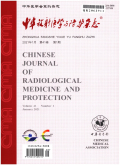三种全乳联合瘤床同步推量放疗技术的剂量学与放射生物学研究
Dosimetric and radiobiological differences in three radiotherapy techniques of whole breast irradiation with simultaneous integrated boost
摘要目的:对比3种早期乳腺癌保乳术后全乳联合瘤床同步推量放疗(WBI-SIB)计划的剂量和放射生物学差异。方法:回顾性选择20例早期左侧乳腺癌保乳术后放疗患者的资料,以相同处方剂量和目标条件重新设计3种计划,包括混合调强放疗(HIMRT)、调强放疗(IMRT)和容积旋转调强放疗(VMAT)。比较靶区和危及器官剂量,以及特定器官的正常组织并发症概率(NTCP)和二次癌症风险(SCR)的差异。结果:VMAT较HIMRT和IMRT计划显著降低了患侧肺、心脏的各项剂量学指标,但增加了健侧肺、健侧乳腺 Dmean以及健侧乳腺 V5 Gy,差异均有统计学意义( P < 0.05)。VMAT计划心源性死亡、放射性肺炎以及肺纤维化的平均NTCP分别为0.41%、1.62%和23.59%,较其他两种技术显著降低( P < 0.05)。IMRT与HIMRT相比,危及器官(OAR)的10项剂量学指标差异均无统计学意义( P>0.05),但NTCP分析发现IMRT的心源性死亡( t = 2.70, P < 0.05)和肺纤维化( t =4.11, P < 0.05)风险较HIMRT有小幅下降。此外,VMAT对健侧肺的超额绝对风险(EAR)分别是HIMRT与IMRT的1.65倍和1.83倍( z = -3.92, t = -6.43, P < 0.05),健侧乳腺的EAR分别是其他两种技术的2.79倍和2.65倍( z = -3.21、-3.70, P < 0.05)。 结论:对于早期乳腺癌的WBI-SIB调强放疗,VMAT对心脏和患侧肺的保护最好,但对侧乳腺和对侧肺的SCR最高。对年轻或心肺功能健康的早期乳腺癌患者使用VMAT技术需要格外重视减少对侧乳腺组织的低剂量辐射,以尽可能降低SCR风险;而对于已经存在明显心肺风险或年龄较大的患者,VMAT技术可能获益更大。
更多相关知识
abstractsObjective:To identify the dosimetric and radiobiological differences of three radiotherapy techniques of whole breast irradiation with simultaneous integrated boost (WBI-SIB) following breast-conserving surgery for early breast cancer (EBC).Methods:The data of 20 patients with early left-sided breast cancer who received radiotherapy following breast-conserving surgery were retrospectively analyzed. Three radiotherapy techniques, namely hybrid intensity-modulated radiotherapy (HIMRT), intensity-modulated radiotherapy (IMRT) and volumetric modulated arc therapy (VMAT), were redesigned with the same prescription dose and target conditions. Then, doses to target volume (TV) and organs at risk (OAR), along with the normal tissue complication probability (NTCP) and secondary cancer risk (SCR) for specific organs, were compared.Results:Compared to HIMRT and IMRT, VMAT led to significant decreases in various dosimetric indices of the affected lung and heart and increases in the Dmean doses to the healthy lung and healthy breast and V5 Gy doses to the healthy breast, with the differences being significantly different ( P < 0.05). The average NTCP values of cardiac death, radiation pneumonitis, and pulmonary fibrosis induced by VMAT were 0.41%, 1.62%, and 23.59%, respectively, significantly lower than those caused by other two techniques ( P < 0.05). No statistical differences were found in 10 dosimetric indices of OAR between IMRT and HIMRT, while the NTCP analysis suggested that the risks of cardiac death ( t = 2.70, P < 0.05) and pulmonary fibrosis ( t =4.11, P < 0.05) induced by IMRT were slightly lower than those caused by HIMRT. In addition, the excess absolute risk (EAR) to the healthy lung posed by VMAT was 1.65 and 1.83 times those induced by HIMRT and IMRT, respectively ( z = -3.92, t = -6.43, P < 0.05). In contrast, the EAR to the healthy breast induced by VMAT was 2.79 and 2.65 times those posed by HIMRT and IMRT, respectively ( z = -3.21, -3.70, P < 0.05). Conclusions:Among three intensive-modulated radiotherapy techniques of WBI-SIB for EBC, VMAT provides the optimal protection for the heart and affected lung but leads to the highest SCR to the healthy lung and breast. When VMAT is employed for young EBC patients or those with normal cardiopulmonary function, special attention should be paid to reducing low-dose irradiations to the healthy breast and thereby minimizing SCR. In contrast, VMAT might be more favorable for patients with pronounced cardiopulmonary risks or aged patients.
More相关知识
- 浏览16
- 被引0
- 下载1


相似文献
- 中文期刊
- 外文期刊
- 学位论文
- 会议论文



 换一批
换一批 换一批
换一批



